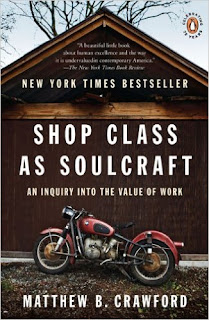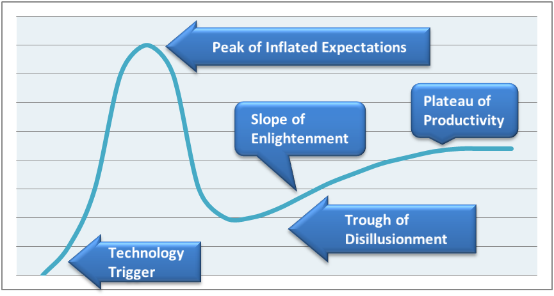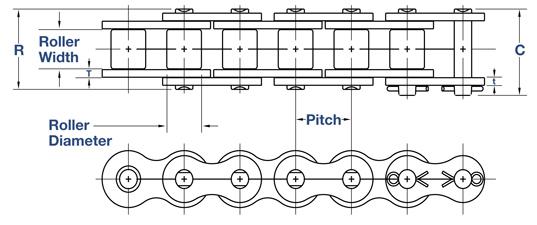ˈentrəpē/
1. lack of order or predictability; gradual decline into disorder.
“the old bike finally succumbed to entropy amidst the weeds.”
synonyms:
deterioration, degeneration, crumbling, decline, degradation, decomposition, breaking down, collapse;
Out of high school it looked like my life’s work was going to be mechanics. I apprenticed as a millwright and quickly found a comfortable living doing work that I found satisfying. When I put down the tools and went to university I spent a lot of time chasing down philosophy and literature that was looking at a perfected idea of the world. The thought of spending my time thinking about machines that were in a continual state of decay (in fact, every time you use them they are literally falling apart), seemed silly. That they also produced pollution (both in operation and manufacture) and were generally quite wasteful put them further from my mind. I ended up leaving mechanics and my love of vehicles behind and going into I.T. after university for those reasons.
 |
| Shop Class as Soulcraft: if you enjoyed Zen and the Art of Motorcycle Maintenance, you’ll love this read! |
I’d been teaching English for a number of years when I had an opportunity to switch to computer engineering. I ended up going back to school to get my teaching qualifications as a computer technology teacher. At that training my instructor put me on to Shop Class as Soulcraft. Suddenly, here was a deep, insightful argument against academics for the sake of academics and a profound argument for why you should not only exercise, but celebrate your manual technical skills. Those skills are what can ground our intelligence and give it meaning in the world around us.
You sometimes hear the term, ‘it’s academic‘ – meaning it doesn’t matter in the real world. If you’ve spent any time in institutions of higher learning, you’ve probably noticed how insular and self serving they are. The value they assign to academics is generated entirely by the people involved, there are no subjective criteria. When you tie intelligence to something in the real world, the real world will cruelly and repeatedly correct assumptions that would otherwise happily exist in academia.
Having real-world hardened technical expertise is a very different thing than a background in academia. One is relentless and demanding, the other political and collaborative. As long as you tow the line in academia, you generally do well. You can tow the line all you want in engineering, but if you don’t submit to the demands of reality you won’t get anywhere, no matter how well you get on with your colleagues.
I find I’m able to integrate the intellectual muscle developed in university with my manual skills very effectively; they aren’t concordant, they’re complimentary, but the idea that what I’m working on is in a constant state of entropy still bothers me. The very best you can hope for with a machine is to maximize the time it’s operational before it inevitably fails. I missed the perfection and timelessness of ideas found in academia.
| A meditative mindset in the wind. |
Like Pirsig in Zen, I often find myself ruminating while I ride. The complex machine interaction, balance and awareness needed to operate a motorcycle sets your mind in motion, but leaves your intuition free to chase down ideas. I write better after I’ve been riding because my brain is full of meditative juices.
On our recent ride around Lake Huron, I was pondering this idea of entropy. I’m in my late forties now and the concept of entropy no longer applies to just machines. I’m watching everyone get older and struggle with the inevitable. Entropy isn’t just a state in machines, it’s how reality works. Everything is in the process of disintegrating, the trick is to dance gracefully in the decay. Holding back the inevitable is what life is, and if I can perform that life affirming act by resurrecting an old bike, or replacing a failed component in an injured machine, it’s not a wasted effort. Perhaps that is part of the joy I feel when I see an older vehicle on the road long after it should have gone to scrap; it’s a symbol of defiance against the inevitable.
***
Do not go gentle into that good night
Dylan Thomas, 1914 – 1953
Do not go gentle into that good night,
Old age should burn and rave at close of day;
Rage, rage against the dying of the light.
Though wise men at their end know dark is right,
Because their words had forked no lightning they
Do not go gentle into that good night.
Good men, the last wave by, crying how bright
Their frail deeds might have danced in a green bay,
Rage, rage against the dying of the light.
Wild men who caught and sang the sun in flight,
And learn, too late, they grieved it on its way,
Do not go gentle into that good night.
Grave men, near death, who see with blinding sight
Blind eyes could blaze like meteors and be gay,
Rage, rage against the dying of the light.
William Butler Yeats (1865-1939)
THE SECOND COMING
Turning and turning in the widening gyre
The falcon cannot hear the falconer;
Things fall apart; the centre cannot hold;
Mere anarchy is loosed upon the world,
The blood-dimmed tide is loosed, and everywhere
The ceremony of innocence is drowned;
The best lack all conviction, while the worst
Are full of passionate intensity.
Surely some revelation is at hand;
Surely the Second Coming is at hand.
The Second Coming! Hardly are those words out
When a vast image out of Spiritus Mundi
Troubles my sight: a waste of desert sand;
A shape with lion body and the head of a man,
A gaze blank and pitiless as the sun,
Is moving its slow thighs, while all about it
Wind shadows of the indignant desert birds.
The darkness drops again but now I know
That twenty centuries of stony sleep
Were vexed to nightmare by a rocking cradle,
And what rough beast, its hour come round at last,
Slouches towards Bethlehem to be born?







































